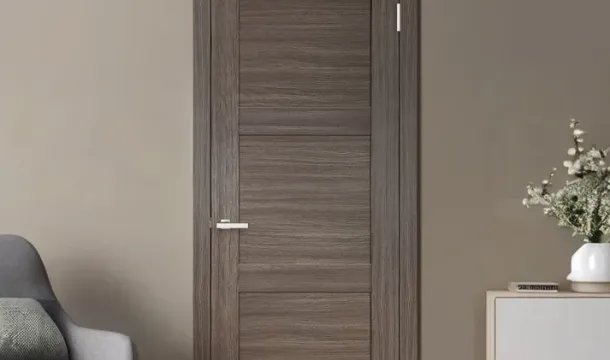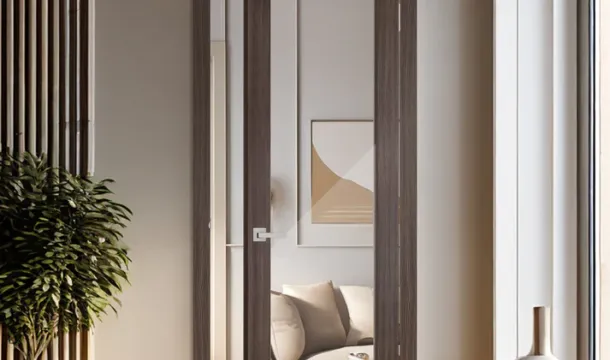Improving Hallway Style with Thoughtful Interior Door Choices
Popular Articles
Selecting the right interior doors can redefine your hallway's atmosphere and functionality. Opt for doors with clean lines and minimalistic hardware to enhance natural light flow, especially in narrow or windowless corridors common in Canadian homes. Frosted glass panels balance privacy and brightness, preventing hallways from feeling cramped or dark.
Material choice directly influences both durability and style. Solid wood doors offer warmth and sound insulation but may require more maintenance in humid climates. Engineered wood or composite doors resist warping while mimicking natural textures, making them practical for busy households without sacrificing aesthetics.
Hardware finishes contribute subtle yet impactful accents. Matte black handles introduce a modern edge against lighter walls, while brushed nickel complements transitional styles seamlessly. Consider soft-close hinges to reduce noisea valuable feature in multi-level homes where hallways serve as main traffic arteries.
Customizing door height and width can create visual interest and improve spatial perception. Taller doors draw the eye upward, imparting a sense of grandeur even in modest spaces. Wider door frames accommodate accessibility needs without disrupting design harmony, especially relevant for aging-in-place considerations prevalent across Canadian communities.
Selecting Doors for Narrow Hallways
Sliding or pocket doors save space by eliminating the need for swing clearance, making them ideal for tight corridors. Opt for high-quality hardware to ensure smooth operation and durability over time.
Consider bi-fold doors with slim profiles; they fold compactly and require less wall space than traditional hinged doors. Choose models with recessed handles to avoid protrusions that could obstruct movement.
Glass-panel doors with frosted or textured finishes enhance light transmission, visually expanding narrow hallways while maintaining privacy. Lightweight aluminum or composite frames reduce bulk without sacrificing strength.
For hinged options, select doors that open outward into adjacent rooms rather than into the hallway, preserving walking space. Alternatively, install door stops or limiters to prevent wide swings that disrupt flow.
Matte or satin paint in light tones on interior doors minimizes visual heaviness, complementing narrow spaces by reflecting ambient light instead of absorbing it. Avoid dark colors or overly ornate designs that can overwhelm confined areas.
Choosing Colors to Enhance Light
Select interior door colors that maximize natural and artificial light reflection. White or off-white shades with cool undertones, such as soft grays or pale blues, increase the perception of brightness by bouncing light deeper into the hallway space. Avoid dark or overly warm colors like deep browns or reds, which absorb light and create a heavier atmosphere.
For hallways with limited daylight, opt for semi-gloss or satin finishes on doors. These finishes reflect more light compared to matte surfaces without producing excessive glare. Consider pairing lighter door colors with subtle metallic accentssuch as brushed nickel handlesto amplify reflected light subtly.
Using Contrast to Amplify Depth and Brightness
Contrasting door frames in a slightly darker tone than the door itself can visually define architectural details while maintaining an overall bright environment. For example, pairing crisp white doors with light gray frames adds dimension without compromising illumination.
In cases where walls are painted in neutral tones, introducing pastel-colored doors (like mint green or lavender) can enhance ambient light while adding personality. These softer hues reflect enough brightness while preventing monotony often caused by purely white interiors.
Maximizing Space with Sliding Doors
Sliding doors eliminate the need for door clearance, making them ideal for compact hallways or areas where swing space is limited. Unlike traditional hinged doors, they slide parallel to the wall, freeing up floor area that can be used for furniture placement or improved traffic flow.
Opt for pocket sliding doors that recess into the wall cavity, preserving hallway width entirely. These require professional installation but deliver a seamless appearance and uninterrupted walking space. If wall structure or budget restricts pocket doors, surface-mounted sliding doors on exposed tracks offer a stylish alternative without sacrificing space.
Materials matter: lightweight options such as aluminum-framed glass panels reduce operational effort and maintain an open feel by allowing light to pass through, which visually expands narrow corridors. Frosted or textured glass variants provide privacy while preventing a claustrophobic atmosphere.
Consider installing dual sliding doors when adjacent rooms share a common hallway; this approach lets both spaces benefit from unobstructed openings simultaneously. Additionally, integrating soft-close mechanisms prevents noise and wear in high-traffic zones.
Track selection impacts functionalityceiling-mounted systems maximize floor usability, while low-profile bottom tracks reduce tripping hazards. Regular maintenance ensures smooth operation and prolongs door lifespan.
Popular Articles

Soundproofing Interior Doors: Which Options Are Best for Your Home?

Choosing the Perfect Interior Doors for Your Canadian Home
